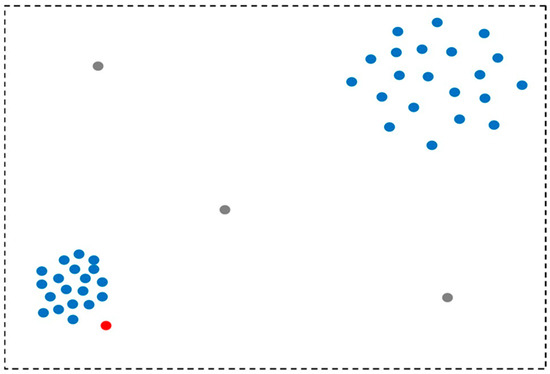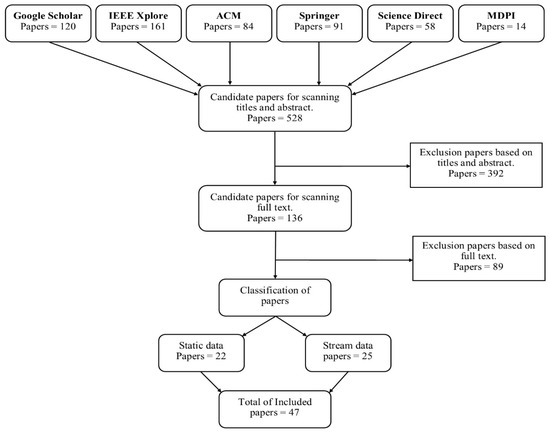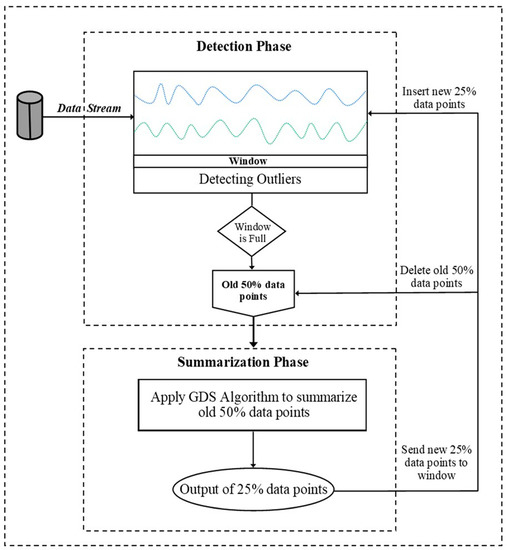Outlier detection is a statistical procedure that aims to find suspicious events or items that are different from the normal form of a dataset. It has drawn considerable interest in the field of data mining and machine learning. Outlier detection is important in many applications, including fraud detection in credit card transactions and network intrusion detection. There are two general types of outlier detection: global and local. Global outliers fall outside the normal range for an entire dataset, whereas local outliers may fall within the normal range for the entire dataset, but outside the normal range for the surrounding data points.
- Outlier Detection
- Anomaly Detection
- Local Outlier Detection
- Stream Data Mining
- Data Cleaning
1. Introduction

2. Literature Review Methodology

3. Analysis and Discussion
3.1. Computational Complexity
3.2. Strengths and Weaknesses of Existing Methods
3.2.1. Nearest Neighbor-Based Techniques
-
The use of techniques to measure the distance of the data point as for the outlier score.
-
To identify the outlier score, the calculation of the relative density of each data point.
3.2.2. Clustering-Based Techniques
-
With the incremental model, it is simple to adjust.
-
No oversight is required.
-
Suitable for temporal data to detect outliers.
-
Requires only a quick test step since the number of clusters needing comparison is typically small.
-
They depend strongly on the efficiency of the clustering algorithm for normal data points.
-
The majority of approaches that identify outliers are cluster by-products and thus are not designed to perform well for detecting outliers.
-
Several cluster approaches process each point to be distributed in some clusters. This could contribute to abnormalities in a large cluster, and techniques that work under the presumption that anomalies are included in each cluster may be viewed as normal data points.
-
Some algorithms demand that each data point is allocated on a cluster. A wide cluster may be used for outliers and handled by methods that often conclude that outliers are isolated.
-
Various approaches to the cluster are only applicable where outliers are not part of the main clusters.
-
The measurement of the clustering algorithm is complicated.
3.3. New Methods to Be Explored























This entry is adapted from the peer-reviewed paper 10.3390/bdcc5010001
